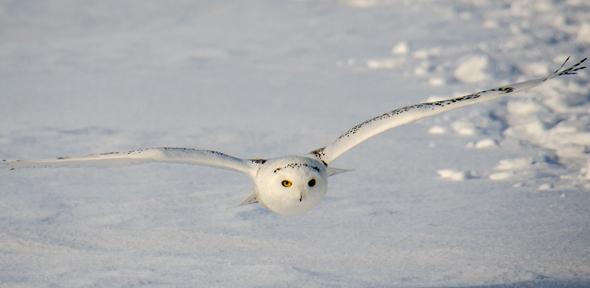
In an attempt to reduce noise generated by wind turbines, researchers from University of Cambridge in collaboration with three US institutions have developed a prototype coating for wind turbine blades, by studying how owls fly and hunt in silence.
The coating material has been developed by researchers at the University of Cambridge in collaboration with researchers at three US institutions including Virginia Tech, Lehigh and Florida Atlantic University.
The material replicates the complex structure of an owl’s wing, which could reduce the noise created by fan blades of turbines, as well as computers and airplanes.
The addition of the new surface would also increase the speed of the turbine of an average-sized wind farm.
The new structure is designed in a way that it will ‘scatter’ the sound generated by a turbine blade in the same way as the owl’s wing.
During earlier experiment, researchers are also tried to cover a blade with material similar to that used for wedding veils which helped lowering surface noise by as much as 30dB.

US Tariffs are shifting - will you react or anticipate?
Don’t let policy changes catch you off guard. Stay proactive with real-time data and expert analysis.
By GlobalDataThey have also developed a prototype material made of 3D-printed plastic and tested it on a full-sized segment of a wind turbine blade which reduced the noise of a wind turbine blade by 10dB.
Cambridge Theoretical Physics professor Nigel Peake said: "No other bird has this sort of intricate wing structure.
"Much of the noise caused by a wing – whether it’s attached to a bird, a plane or a fan – originates at the trailing edge where the air passing over the wing surface is turbulent.
"The structure of an owl’s wing serves to reduce noise by smoothing the passage of air as it passes over the wing – scattering the sound so their prey can’t hear them coming."
Image: owls could help make wind turbines quieter. Photo: courtesy of University of Cambridge/ Mirko Zammarchi via Creative Commons.


